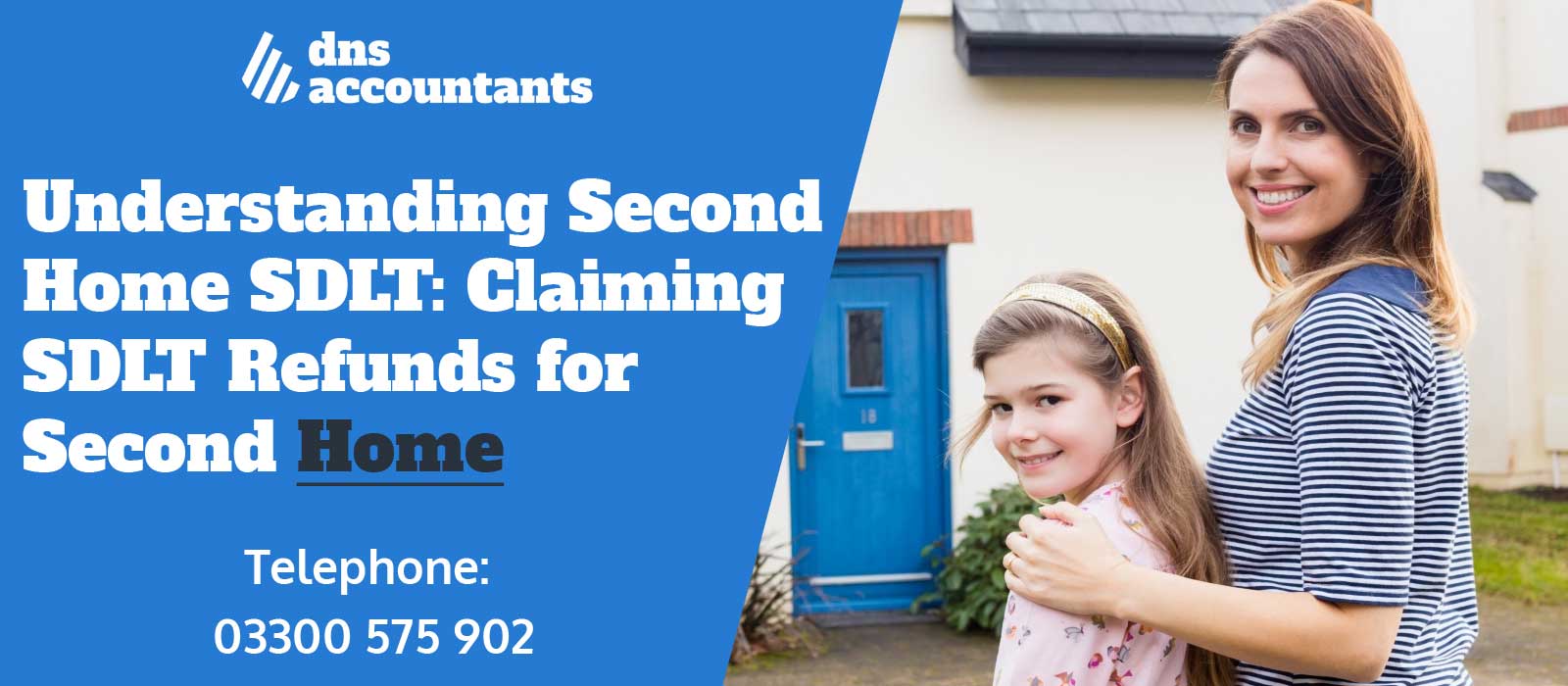
As a savvy property investor, understanding the nuances of Stamp Duty Land Tax (SDLT) is crucial to maximize your savings and make informed decisions. Navigating the often-complex world of SDLT, especially when it comes to second homes, can be a rewarding experience with the right guidance on eligibility and application procedures for a duty refund. So, are you ready to unravel the mystery behind second home SDLT and learn the strategies to minimize its impact on your investments?
In this comprehensive guide, we’ll shed light on the key factors affecting SDLT rates, exemptions and reliefs, the role of online calculators, and strategies for minimizing SDLT on second homes. Moreover, we’ll discuss SDLT refunds, rules for non-UK residents, and regional variations, ensuring you have the knowledge to make well-informed choices when investing in additional properties.
- Understand the influencing factors of Second Home SDLT, including value, geographical area and residency status.
- Utilize online calculators to estimate SDLT due on second homes and consider exemptions & reliefs for potential savings.
- Consider regional variations when navigating Stamp Duty Land Tax rates in England, Northern Ireland, Scotland and Wales.
Stamp Duty Land Tax (SDLT) is a tax levied on the purchase of residential property in England and Northern Ireland. SDLT rates for second homes are subject to an extra 3% surcharge, making it vital for prospective buyers to comprehend its workings and the influencing factors. The recent modifications to SDLT regulations, declared in the 2015 Autumn Statement, have further stressed the importance of being well-informed on the subject.
For property investors, it’s key to identify the significant factors impacting SDLT rates. These factors include the property’s value, geographical area, and the residency status of the purchaser. Being aware of these factors and the recent changes in SDLT regulations will help you make better decisions when considering an additional property purchase.
Key factors affecting SDLT rates
One of the primary determinants of SDLT rates on second homes is the value of residential properties. The limit for incurring additional stamp duty on second homes is properties valued at greater than £40,000. Also, specific property types like caravans, mobile homes, and houseboats do not attract the increased Stamp Duty rate for second homes.
Another factor affecting SDLT rates is the geographical area where the property is located. Different countries within the UK have distinct rates and surcharges applicable to second homes, which we’ll further explore in Section 7.
Finally, the purchaser’s residency status also influences SDLT rates, with non-UK residents shouldering an extra 2% surcharge on residential property purchases, over and above the standard rates.

Recent changes in SDLT regulations
In recent years, there have been several changes in stamp duty rates and SDLT regulations that property investors need to be aware of. The most notable change is the introduction of the 3% stamp duty surcharge for second homes, which came into effect from 1 April 2016. This additional fee applies to all real estate or land with a sale value over £40,000. This charge is mandatory in such cases, leading many to wonder how much stamp duty they will need to pay. To pay stamp duty, investors must calculate the total amount based on the property’s value and the applicable surcharge, ensuring they have paid stamp duty correctly. By understanding the process of paying stamp duty, investors can better prepare for this additional expense.
Annexes, which are additional living spaces within the grounds of a main residence, have also been affected by the new regulations. To be exempt from the 3% surcharge, an annex must be located within the grounds of the main home and must not exceed one third of the total value. Additionally, recent modifications to SDLT regulations include temporary rate reductions and surcharges for non-UK residents.
Calculating SDLT for Second Homes
While calculating the SDLT payable on a second home may appear complicated, online SDLT calculators can streamline the task and provide an estimate of the tax due. These calculators take into account factors such as the property purchase price, whether it’s a second home, and the buyer’s residency status to estimate the SDLT payable. Additionally, there may be scenarios where you are eligible for a stamp duty refund when calculating SDLT for second homes.
However, bear in mind that online SDLT calculators may not always guarantee 100% accuracy and should be used judiciously. In some cases, it may be necessary to consult with a professional, such as a solicitor, estate agent, or conveyancer, to ensure the correct amount of SDLT is paid.
Using online SDLT calculators
Online SDLT calculators are a convenient way to estimate the tax payable on a second home purchase, but their accuracy can sometimes be questionable. For instance, some users have reported difficulties with the HMRC SDLT calculator, leading to overpayments. To avoid such issues, it’s advisable to use a UK stamp duty calculator for a more precise calculation.
To use an online SDLT calculator for a second home, you can visit websites such as Knight Frank, Money Helper, or Stamp Duty Calculator. These websites offer calculators where you can input the necessary information, such as the property value, and the calculator will determine the amount of Stamp Duty Land Tax to be paid.
Exemptions and Reliefs for Second Home SDLT
Although SDLT rates for second homes typically include an extra 3% surcharge, available exemptions and reliefs could considerably lower, or even nullify, the tax due. Grasping these exemptions and reliefs can equip property investors to make judicious decisions, potentially saving them thousands of pounds in tax payments.
Social landlords and charities are exempt from the 3% higher rates on additional residential property purchases. This is one of the exemptions and reliefs that have been provided. Additionally, certain property types, such as:
- properties valued under £40,000
- caravans
- mobile homes
- houseboats
are exempt from SDLT. Furthermore, inheritance and SDLT implications can also impact the tax payable, as we will discuss in the following subsections.
Residential property types exempt from SDLT
As mentioned earlier, certain types of properties are exempt from SDLT, including:
- Properties valued under £40,000
- Caravans
- Mobile homes
- Houseboats
These exemptions can substantially reduce the tax liability for property investors looking to diversify their portfolio or invest in alternative property types.
It’s important to note that the £40,000 exemption threshold is based on the market value of the share in the property, rather than the outstanding mortgage. Therefore, if the market value of the share is below £40,000, you may be exempt from paying additional stamp duty on your second home purchase.

Inheritance and SDLT implications
Inheritance can also impact SDLT rates for second home purchases, depending on the share inherited and the buyer’s circumstances. If you inherit 50% or less of a property, you are not required to pay the additional 3% stamp duty. However, this condition only applies if the inherited property is swapped for a residential one within three years..
It’s worth noting that no stamp duty is payable on inherited property in the UK. However, it’s prudent to consider inheritance tax implications, which may apply depending on the value of the deceased’s estate and other factors.
Strategies to Minimise Second Home SDLT
Property investors can deploy several strategies to lessen the SDLT burden on their second home acquisitions. While these strategies can help save money, it’s important to carefully consider their potential financial and legal implications before proceeding.
The subsequent subsections will cover two popular strategies to lower second home SDLT: buying under a single name and employing joint ownership structures. By understanding the benefits and drawbacks of each approach, you can make an informed decision on the best strategy for your unique circumstances.
Purchasing under a single name
Acquiring a second home under a single person’s name could bypass higher SDLT rates, but it may also result in potential financial and legal problems. Lenders may require the named party to pass their affordability tests. This could be quite challenging for them. Additionally, even if affordability is demonstrated, there is the ongoing issue of who actually owns the property should the two parties decide to part ways in the future.
Despite the potential risks, purchasing under a single name can be a viable option for some property investors. However, it’s essential to carefully weigh the pros and cons of this strategy and consult with a legal professional before proceeding.
Utilising joint ownership structures
Joint ownership structures can also aid in reducing SDLT rates for second home acquisitions. By jointly owning a second home with another individual or group of individuals, one can qualify for multiple dwellings relief, which reduces the rate of SDLT on the acquisition of more than one dwelling closer to the standard rate.
An example of such a joint ownership structure is unmarried couples owning one property each. This arrangement can help minimize SDLT rates by dividing the ownership of each property equally between the two parties. However, it’s important to thoroughly evaluate the financial and legal implications of such an arrangement before proceeding.
Claiming SDLT Refunds on Second Homes
Under certain circumstances, property investors might qualify to claim stamp duty refunds on their second home acquisitions, reclaiming overpaid taxes. The eligibility criteria for refunds include selling a previous main residence within three years of purchasing a second home. By understanding the eligibility requirements and the application process, property investors can potentially recover a significant portion of their SDLT payments.
The subsequent subsections will cover the eligibility criteria for SDLT refunds and the application process, which can be completed through HMRC, a conveyancer, or a stamp duty rebate company.
Eligibility criteria for SDLT refunds
To be eligible for an SDLT refund, you must meet the following criteria:
- You must have sold your previous main residence within a period of three years from the purchase of the new property. This applies to properties sold both before and after October 28, 2018.
- Neither the applicant nor their spouse can hold any ownership of the previous home.
- The higher rates cannot apply to the applicant for any other reason.
Please note that if you meet these criteria, you may be eligible for an SDLT refund.
In some cases, there may be exceptions to the three-year rule for selling a main residence, such as if the purchase is to replace a main residence and there is a sale of the existing main residence. It’s essential to carefully review the eligibility criteria and consult with a legal professional if needed to determine if you qualify for an SDLT refund.
How to apply for SDLT refund?
Applying for an SDLT refund can be done through HMRC, a conveyancer, or a stamp duty rebate company. To apply through HMRC, you can either submit the application online or by post. Keep in mind that you must claim the refund within 12 months from the date of sale of the former main residence or within one year of the filing date on the newer property.
If you prefer to use a conveyancer or a stamp duty rebate company, they can assist you with the application process and submit the necessary paperwork to HMRC on your behalf. In either case, it’s crucial to provide accurate and complete information to ensure your application is processed and approved in a timely manner.

SDLT Rules for Non-UK Residents and Overseas Property
Non-UK residents and persons who own property abroad should also familiarize themselves with the SDLT rules applicable to them. For non-UK residents, a 2% surcharge is applicable on residential property purchases in addition to the standard SDLT rates. This surcharge applies even if the stamp duty holiday is in effect.
Furthermore, foreign nationals and UK expats who own another property anywhere else in the world and decide to purchase an additional property in England or Northern Ireland will be liable for a 3% stamp duty surcharge. This section will examine the non-UK resident surcharge and the effect on SDLT rates of owning property abroad.
Non-UK resident stamp duty surcharge
Non-UK residents are subject to a 2% surcharge on residential property purchases in addition to the standard SDLT rates. This surcharge applies to all properties and land with a purchase price exceeding £40,000 and is applicable to all non-UK residents, even if only one of the buyers is a non-UK resident.
While this surcharge may seem like an additional financial burden, it’s essential for non-UK residents to be aware of it and factor it into their property purchase calculations. By understanding the surcharge and its implications, property investors can better navigate the UK property market and make well-informed decisions.
Owning property abroad and its impact on SDLT
Owning property abroad can also impact the SDLT rates for second home purchases in the UK. Foreign nationals and UK expats who own a property in another country and wish to purchase an additional property in England or Northern Ireland will be subject to a 3% stamp duty surcharge.
This surcharge applies regardless of whether the property abroad is the buyer’s main residence or an investment property. As a result, it’s crucial for property investors with holdings abroad to be aware of the SDLT rules and how they may affect their second home purchases in the UK.
Navigating Regional SDLT Variations
Deciphering the regional variations in SDLT rates can be complex, as rates for second homes diverge across England, Northern Ireland, Scotland, and Wales, each with unique rates and surcharges. Understanding these regional variations is essential for property investors looking to maximize their savings and make informed decisions.
The subsequent subsection will compare SDLT rates for second homes across different UK countries, offering a clearer depiction of the tax landscape for property investors.
Comparing SDLT rates by country
In England and Northern Ireland, SDLT rates for second homes typically include a 3% surcharge on top of the standard rates. Meanwhile, in Scotland, the rates for second homes are 4% for properties up to £145,000 and 6% for properties between £145,001 and £250,000. In Wales, the rates range from 4% to 16%.
It’s important to note that non-UK residents purchasing property in England and Northern Ireland are subject to an additional 2% surcharge on top of the standard rates, regardless of the stamp duty holiday. Furthermore, different countries within the UK have distinct exemptions and reliefs, which can significantly impact the overall tax liability for property investors.
By understanding the regional variations in SDLT rates and the factors that affect them, property investors can make well-informed decisions when investing in additional properties across the UK.
In conclusion, understanding the intricacies of second home SDLT is essential for property investors looking to maximize their savings and make informed decisions. By familiarizing yourself with the key factors affecting SDLT rates, exemptions and reliefs, and the regional variations in rates, you can better navigate the property market and minimize the impact of SDLT on your investments.
Armed with the knowledge and strategies shared in this guide, you’re now well-equipped to confidently invest in second homes and make savvy decisions that will benefit your financial future.
How much stamp duty do I pay if I have a second home?
If you own another residential property, you will usually have to pay 3% in additional stamp duty on a second home.
What is the 3% SDLT?
The 3% SDLT is an additional stamp duty charged when buying a property if you already own another residential property, in addition to the standard rate of stamp duty.
What is the 3 year rule for SDLT main residence?
The 3 year rule for SDLT main residence states that if your previous main residence is sold or given away within 3 years of purchasing a new one, you can apply for a refund of the higher SDLT rate part of your Stamp Duty bill. However, this only applies if you and your spouse do not still own any part of your previous home and the higher rates still don’t apply to you for any other reason.
Are there any exemptions from the additional rate of stamp duty on second homes?
Yes, there are exemptions from the additional rate of stamp duty on second homes including divorce or separation, mixed-use properties, main residence changes and social landlord and charities purchases.
Can you claim back second home Stamp Duty?
In certain circumstances, you may be able to claim back Stamp Duty on a second home if you are using it as your primary residence and selling other properties.

